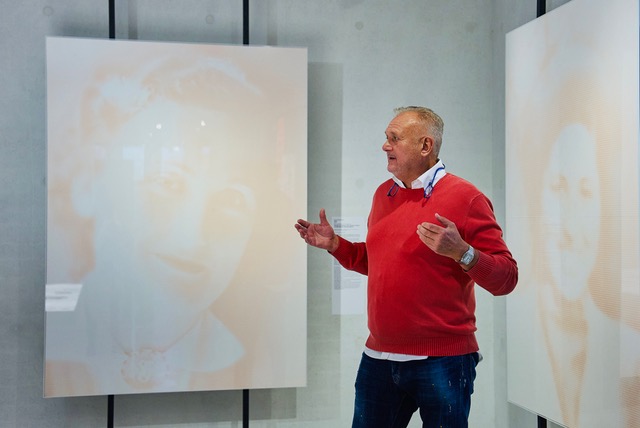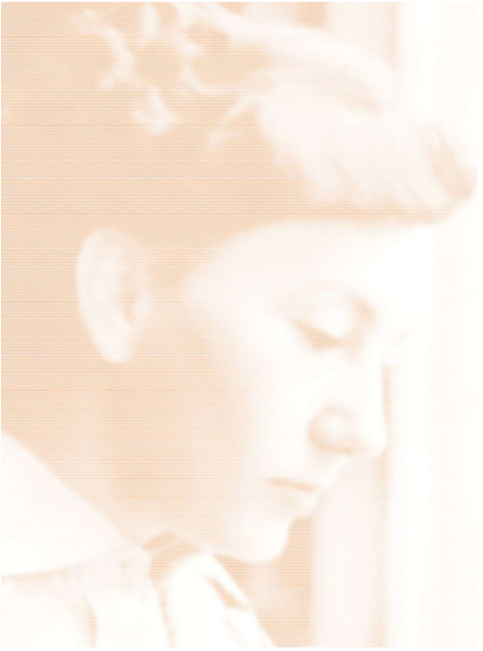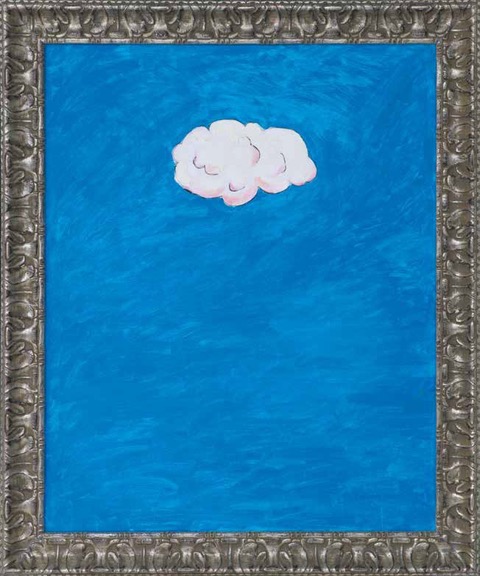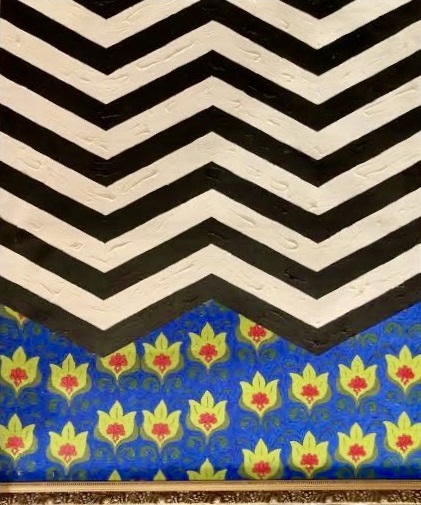
Culturalee interviewed Polish artist Pawel Kowalewski, who is exhibiting in ‘Materializing. Contemporary Art and the Shoah in Poland’ – at the NS Doku in Munich until 25th February, 2024. Pawel Kowalewski is the founder of the artistic formation Gruppa. Kowalewski and one of the most prominent Polish contemporary artists. He is exhibition in a group exhibition at NS Doku in Munich called “Materialising. Contemporary Art and the Shoah in Poland”. The other featured artists are; Zuzanna Hertzberg, Elżbieta Janicka & Wojciech Wilczyk, Paweł Kowalewski, Agnieszka Mastalerz, Natalia Romik, Wilhelm Sasnal, and Artur Żmijewski and Zofia Waślicka-Żmijewska.
The exhibition was curated by Anna Straetmans, Mirjam Zadoff and Piotr Rypson, and examines the artistic practices of contemporary Polish artists addressing themes of memory and the material traces of the Holocaust. The Shoah has been present in Polish visual culture since the 1940s, initially in films, paintings, graphic works, and sculpture, and later in installations, videos, and performances. Such works result from a variety of creative processes—documentation, commemoration, and expressions of sorrow and anger, but also those focused on ritual, the politicized representation of events and individuals, and the manipulation of collective memory.
The “Strength and Beauty” series was previously presented in exhibitions at Artists’ House in Tel Aviv in 2015, and the Museum of the History of Photography in Krakow, in 2017.
Culturalee: You are currently exhibiting in ‘Materializing. Contemporary Art and the Shoah in Poland’, a group exhibition at NS Doku in Munich. Have you exhibited with any of the fellow Polish artists in this exhibition in the past?
Pawel Kowalewski: My works were presented in so many exhibitions that most likely our paths crossed with those artists, although we only met in person in Munich.
Culturalee: The Munich exhibition is titled ‘Materializing. Contemporary Art and the Shoah in Poland’, Shoah is another word for Holocaust, and is the Hebrew word for “catastrophe”, referring to the murder of nearly 6 million Jews in Europe by Nazi Germany and its collaborators. Obviously this is a very painful subject, and incredibly sensitive given the current unrest in the world. How did the curators Anna Straetmans, Mirjam Zadoff and Piotr Rypson, collaborate with the artists to address such a painful subject respectfully?
The collaboration with the curators was very good, especially Piotr Rypson, who curated this difficult topic from the Polish side. He did an excellent job in both selecting the artists and in the diversity of works and different perspectives on such a tragic event.

Paweł Kowalewski ,’Fela’, 2015
Culturalee: Your vanishing portraits are incredibly poignant and personal, they depict women who were friends of your Mother’s who survived the persecuting of Jews during Nazi Germany. Where did the idea come from to make vanishing portraits, and how did you develop the photographic technique?
The idea of disappearing portraits emerged right after the death of my mother in 2014, when I was preparing an exhibition in Tel Aviv where I intended to present my work ‘Simulator of Totalitarianism’. However, at one point, I realized how a unique moment had personally affected me: the last representative of my parents’ generation, my mother, had disappeared. I understood that this entire generation was fading into oblivion, and that the initial feelings of longing and memory would gradually blur and vanish. In Israel, I conducted conversations with nine friends whose mothers had passed away much earlier than mine. They too were grappling with the trauma of a generation so tragically burdened by two totalitarianisms. Of course, I could have created paintings in any technique as a tribute to these ten women, but I decided to do something that would relate not only to them but also to the entire memory of the Holocaust that is slowly disappearing. It was not an easy task; many people were involved, from the producers of disappearing paints to a huge printing house and excellent computer operators. The result of the work you can judge for yourselves, remembering that these portraits are almost two meters by 140 cm in size, created from photographs the size of a postage stamp.

Pawel Kowalewski ‘“Happiness”, from cycle “Loneliness”, 2019
Culturalee: Although your artistic practice seems to carry the weight of historic pain, loss and tragedy, there is a sense of light at the end of the tunnel. For example your 1992 series “Fin de Siécle” confronts the sense of impending catastrophe characteristic of every end of the century through paintings of flowers in an Arts and Crafts style with an Art Nouveau inspired decorativeness. How do you decide when you approach a subject, whether you will use painting or photography, and is it a conscious decision to combine light with darkness so that there is a feeling of hope?
That’s a very interesting question, especially for an artist like me who uses sculpture, photography, painting, and other 21st-century techniques, and additionally, believes that since the end of the 20th century in post-conceptual art, the medium is significant but can be chosen quite freely by artists. As for the ‘End of the Century’ series, as the title suggests, it was painted towards the end of the last century. It’s true that some of the paintings from this series resemble bas-reliefs more than paintings, but that was precisely the effect I was aiming for.
Our entire life is a mixture of light and darkness, and since art is a part of reality, it is certainly our desire to leave behind a feeling of hope.

Paweł Kowalewski, Painting from the cycle “Fin de Siècle”, oil on canvas, 121 x 150 cm, private collection, 1992
As a co-founder Gruppa, the Warsaw-based group of artists that changed the path of painting in Poland in the mid-1980’s, what do you feel is the enduring legacy of the group, and how many of the artists are still working today?
I’ll start from the end: all the artists of our group not only are alive but also manage to create. Some have remained in the world of painting, while others, like myself, approach art much more freely. I think the breakthrough that occurred after us gave young artists, who entered their mature lives in a free Poland after 1989, a tremendous freedom of action and the opportunity to confront the past, especially in Polish painting, which until a certain point was quite conservative.
How do you feel the art world has changed since you started out in the 1980s – would you agree that there is less sense of being a ‘Polish’ artist and more a part of a global community of artists, with the advent of international art fairs exhibiting artists from all over the world, and since the world has become smaller in terms of communication via social media and other forms of media?
Yes, the world has changed significantly since the 1980s. The accessibility and exchange of ideas, especially among artists, are practically unimpeded by any borders. Suddenly, Western Europe and the United States realized that their circles lacked not only female creators and artists of Asian descent and those from Africa, but also creators from Eastern Europe. I think it’s wonderful that Eastern Europe is no longer seen solely through the lens of the dominant, albeit not always excellent, Russian art. I hope that, like most minorities, it will eventually take its rightful place on the map of the artistic world.
The ‘Strength and Beauty’ series is a commentary on the human tendency to forget or disrespect history. We are living through a particularly dangerous period of history, the consequences of which are unfolding before our eyes, and sadly human beings seem doomed to repeat the mistakes of the past repeatedly. What role do you feel artists play in documenting and examining momentous and often tragic moments in history? which the artist perceives as extremely dangerous.
I always repeat the sentiment that if politicians read Shakespeare with true understanding, the world would look much better, and our history wouldn’t be filled with so many crimes and human suffering. Zofia Golubiew, the recently deceased director of the National Museumin Krakow, once said that I am one of those naive artists who believe that art can instantly change the world.
However, she quickly corrected herself, saying that by my naivety she meant a very positive kind of naivety. I will never abandon this naivety and will continue to warn the world about things that can leave museum walls, spill out onto the streets, and threaten us directly. This is how I view racism, intolerance, and all totalitarian systems that assume the right to control our lives. Artists must shout out because if they don’t shout loudly enough, history will truly repeat itself.

Pawel Kowalewski ,’Fides against Intellectus”, from cycle “Hannah Arendt” 2020
How did you set out on your path to becoming an artist – was it something you always felt was your destiny, and where did you train?
When I was a little boy, I was never too diligent a student and my family had no artistic traditions. However, art was highly respected and adorned the walls of our home, probably why my parents sent me and my sister to a private painting school. Thus, at the age of 7 or 8, I became a laureate of an exhibition organized by the Embassy of India in a drawing competition. This was probably my greatest success as a young student and likely determined my love for art and became my destiny. It was hard work getting into the Academy of Fine Arts, where 25 people applied for each spot. Fortunately, my parents understood my determination and my first teacher was Zbyszek Pospieszynski, a final-year student in the studio of Stefan Gierowski at the Warsaw Academy of Fine Arts. I was thrilled to join this studio on my second attempt, and those were truly wonderful five years of study.
‘Materializing. Contemporary Art and the Shoah in Poland’ is at the NS Doku from 20 th October 2023 to 25 th February, 2024.
www.pawelkowalewski.pl



